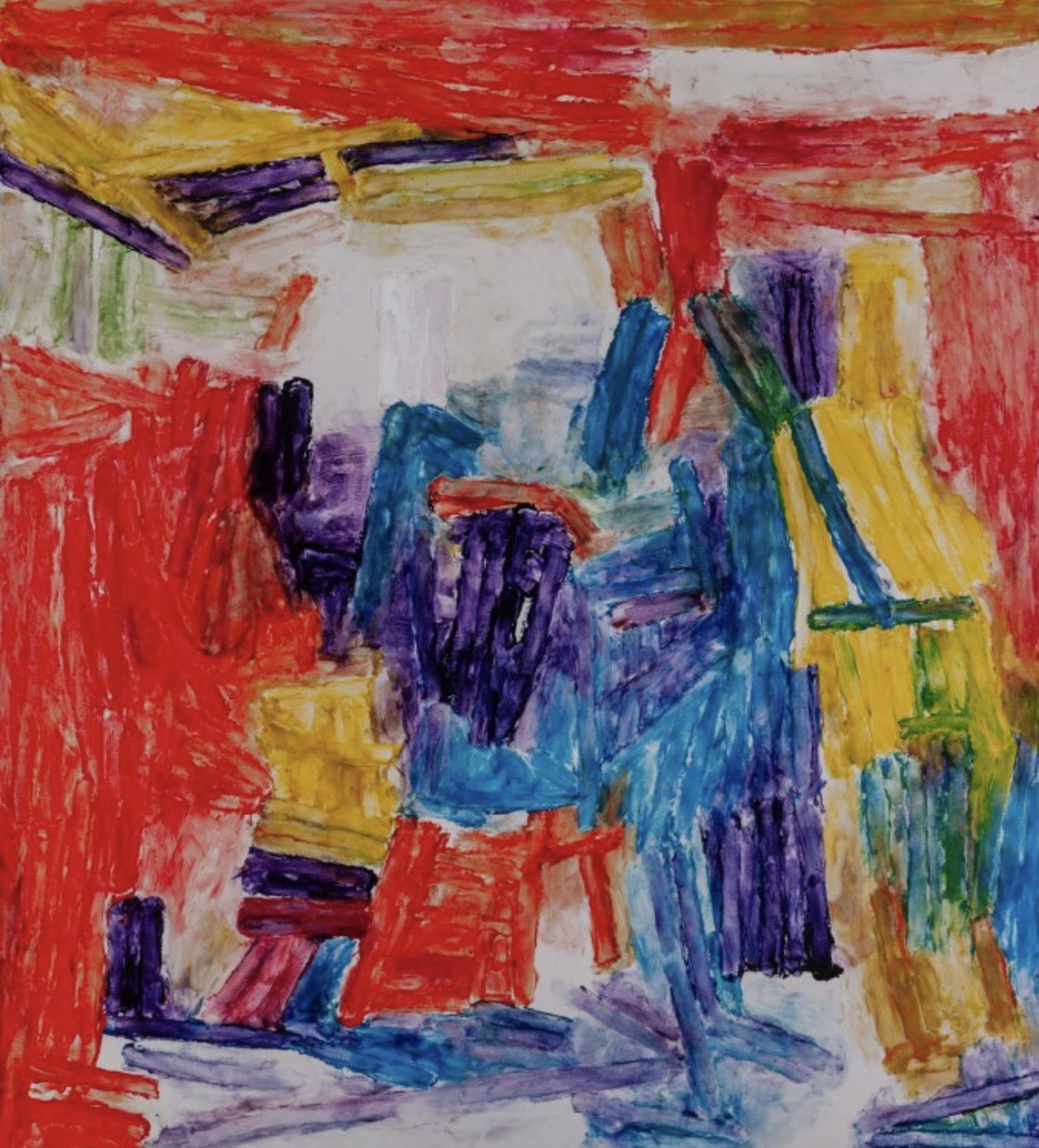Robyn Maree Pickens reviews recent exhibits and film

‘‘Gold Fish Bowl’’, James Varga
(Wave Project Space, 1 Vogel Street)
I like that one painting, titled My First Oil Painting is $820,000; the road cone is not included in the multimedia work Fairly Anonymous; and that many of the other works are not for sale.
James Varga (they/them/their) is a self-taught artist, and this is their first exhibition at Wave Project Space, the newest art space in Otepoti (1 Vogel Street).
The exhibition title, ‘‘Gold Fish Bowl’’ goes in at least two directions. Varga could be referencing the intimate nature of some of the paintings, which offer an insight into the artist’s life over the past 18 months (however fictionalised).
Alternatively, or additionally, the title could provoke an analogy between the distractions of contemporary life and the supposed attention span of a goldfish - nine seconds (up from five seconds). Together, these speculations point towards the restless, frenetic energy that characterises Varga’s exhibition.
Some of Varga’s figurative paintings are raw, and bear a certain resemblance to Jeffrey Harris’s style.
Other figurative paintings are sombre, like Fish Bits, in which the hacked pieces of fish are piled in a square tray over a partially concealed tino rangatiratanga flag. The Ukrainian flag also appears in some of Varga’s most recent paintings that combine figuration and abstraction.
Varga has opted for a salon-style hang so the walls are busy with paintings of different sizes, subject matter, and stylistic range. It is an installation that complements the dynamism of Varga’s personal-political worlds.

‘‘Rods and Poles’’, Jessica Crothall
(Moray Gallery)
‘‘Rods and Poles’’, Jessica Crothall’s current exhibition at Moray Gallery, continues the artist’s affective and formalist engagement with the 2010–2011 earthquakes in Otautahi Christchurch.
The affect or emotion is most tangibly evident in the exhibition’s single figurative painting, Deposition I, in which a partially clothed man has been passed down a chain of rescuers to safety.
Deposition II serves as a transitional work between the figuration of Deposition I and the geometric abstraction of the other works. In this transitional work (Deposition II), Crothall retains compositional elements of the preceding work, but the primarily human forms become abstracted shapes in the exhibition’s colour palette of red, purple, blue, and yellow.
The ‘‘descent’’ trope - of the man and the movement from figuration to abstraction - complements the destruction of human-built environments wrought by the earthquakes. That is, buildings that once were places of work (particularly in the CBD) became fractured and fragmented and inhospitable to human activity.
Crothall’s sequencing of paintings and the formalist mode of abstraction captures the exposed rebar, beams, and poles that once formed and supported walls, floors, and ceilings.
As part of the restoration process of the CBD, the built landscape became populated by scaffolding and Crothall’s attention to this is evident by the painting titled Scaffolding and by the short, overlapping lines resembling the interlocking metal bars.
If viewed according to their sequencing, another movement is observable, namely Crothall’s application of paint, which is lighter and more porous in the later works.

‘‘Mother Tongue’’, Jasmine Togo-Brisby
(DPAG)
"Mother Tongue’’ is a must-see, large-scale, immersive digital video work by Australian South Sea Islander artist Jasmine Togo-Brisby. The film shows three people - the artist, her mother Christina Togo, and the artist’s daughter, Eden Cassady - at Kaparukakau (Deborah Bay) in Koputai (Port Chalmers), Otepoti Dunedin.
It begins with Eden Cassady pushing her mother and grandmother in a little white rowboat out from the shore. Shot entirely from above, the film tracks the progress of Togo-Brisby and her mother as they row around the decaying skeleton of a ship, the Don Juan.
Via the exhibition’s wall text, the viewer learns that this ship was involved in the kidnap and enslavement of Togo-Brisby’s great-great-grandparents from Vanuatu to Queensland, Australia during the Pacific slave trade between 1863-1908.
Togo-Brisby first became aware of the Don Juan in 2017 and subsequently made it the subject of her residency at Tautai Dunedin School of Art in 2019.
The film is a response to the presence of the very ship responsible for the violence of her great-great-grandparent’s abduction and dislocation and its impact through the generations.
As a way of confronting this traumatic event (with its ongoing manifestations), Togo-Brisby and her mother undertake a ritualistic blessing of and lament for their ancestors and other Australian South Sea Islanders kidnapped from their homes to work on the sugar plantations or homes of the wealthy in Queensland.
The utterances voiced in the film are recordings of Togo-Brisby’s mother speaking softly and sibilantly in tongues.











